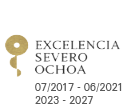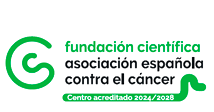2017/02/07
CIC bioGUNE research on nerve regeneration after injury, selected as one of the most relevant studies in the prestigious Journal of Cell Biology on neuroscience and autophagy
The work of the Ikerbasque researcher Ashwin Woodhoo will be published in a collection of selected articles on autophagy in the Keystone Symposium 2017
Dr. Woodhoo’s study has also been selected as one of the most relevant articles of the last two years in The Journal of Cell Biology, and was recently presented at the 2016 annual meeting of the Society for Neuroscience
The work reveals that the cells of the peripheral nervous system are capable of internally removing damaged myelin after an injury and of leading a regenerative process
(Bilbao, 7 February 2017). A study led by the CIC bioGUNE Ikerbasque researcher Dr. Ashwin Woodhoo on nerve injury regeneration has been selected as one of the most relevant of recent years in The Journal of Cell Biology on neuroscience and autophagy.
The work, carried out jointly by researchers from CIC bioGUNE and University College of London, reveals that the cells of the peripheral nervous system are capable of internally removing damaged myelin after injury and leading a regenerative process.
The study, published in The Journal of Cell Biology, has been selected for publication as one of the most relevant articles on autophagy at the Keystone Symposia Conference 2017, to be held February 12-16 in Colorado, USA. Dr. Yoshinori Ohsumi, a Japanese cell biologist, was awarded the Nobel Prize for Medicine in 2016 for his work on autophagy, a procedure for breaking down and recycling cell components.
The importance of Dr. Woodhoo’s article has also led to it being selected as one of the most relevant pieces of work of the last two years in The Journal of Cell Biology, and presented in the 2016 annual meeting of the Society for Neuroscience in San Diego, USA.
Dr. Woodhoo’s research reveals that the regenerative quality does not occur in the cells of the central nervous system, which would explain why the brain and the spinal cord are not able to remove myelin.
Myelin is a substance made up of proteins and lipids - lipoprotein - which surrounds the axons of nerve cells. Damage to myelin causes nerve impulses to slow down or even stop, and may give rise to severe neurodegenerative diseases such as multiple sclerosis, amongst others.
Study findings reveal how the cells of the peripheral nervous system, or Schwann cells, are capable of removing myelin damage caused by nerve injury through a process known as autophagy, a highly regulated cellular mechanism through which internally unusable cellular components are degraded and recycled.
After contributing to myelin clearance, these same Schwann cells are instrumental in the development of new nerve endings, i.e. in driving the neuronal regeneration process. The CIC bioGUNE study reveals that in the first seven days after a nerve injury, Schwann cells are capable of removing between 40 and 50% of the damaged myelin through autophagy.
About CIC bioGUNE
The Centre for Cooperative Research in Biosciences (CIC bioGUNE), located in the Bizkaia Technology Park, is a biomedical research organisation conducting cutting-edge research at the interface between structural, molecular and cell biology, with a particular focus on the study of the molecular bases of disease, for use in the development of new diagnostic methods and advanced therapies.
See a large version of the first picture

See a large version of the second picture





